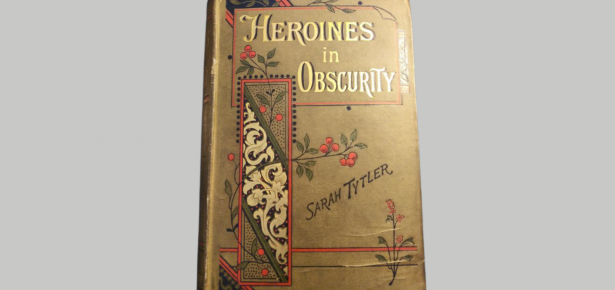
When people learn that I’ve been working on a book on nineteenth-century Scottish women writers, they frequently ask ‘were there any’? This is an understandable question. In fact, it’s the question that motivated me to write Scottish Women’s Writing in the Long Nineteenth Century. I wondered why England and the United States saw a substantial increase in women writers, and particularly novelists, during the nineteenth century while Scotland apparently did not. Indeed, the years between Walter Scott’s death in 1832 and Robert Louis Stevenson’s rise to popularity in the 1880s have long been perceived as the nadir of Scottish literary history, a time when little worthy of attention was written.
Six months of archival research as a Fulbright Scholar at the National Library of Scotland proved to me that Scotland did in fact witness a blossoming of women writers during the nineteenth century. Margaret Oliphant, Henrietta Keddie, Annie S. Swan, Jane and Mary Findlater, Flora Annie Steel, Lucy Bethia Walford, Isabella Fyvie Mayo, and Violet Jacob, among many others, wrote biographies, histories, educational works, poetry, short stories, and most of all, novels. Keddie and Oliphant each wrote over 100 novels, Swan wrote more than 230, and Steel, Walford, and Mayo each wrote over 30. Many of their novels celebrate the richness of provincial Scottish life—its language, people, traditions, and landscapes—while also illuminating its constraints and deficiencies, particularly for women. Their novels offered readers a temporary escape from their dull round of domestic duties, paradoxically, by revealing the spectacular drama and beauty latent in the everyday. These writers were particularly gifted at what Muriel Spark, their better-known successor, describes in The Prime of Miss Jean Brodie as ‘the transfiguration of the commonplace’—the revelation of the extraordinary in the mundane.
My archival work at the NLS changed my research question from ‘were there any nineteenth-century Scottish women writers’? to ‘why have these writers and their works virtually disappeared from Scottish—and British–literary history’? As you might imagine, there is more than one answer to this question. For a start, many Scotswomen wrote primarily for the periodical press. The ephemerality of magazines and newspapers compared to bound books is one reason why relatively few of their works are known today. The periodical press required a constant supply of new fiction and poetry, and for those women who wrote to support themselves or their families, it was a fairly reliable source of income.
Scottish women writers may have contributed to their own erasure from literary history by modestly downplaying the lasting aesthetic value of their works. They tended to compare novel-writing to other domestic skills—for instance, flower-arranging, baking, or embroidery—all of which produced decorative or disposable commodities, items valued for the momentary pleasure they bring rather than for their usefulness or their enduring beauty.
However, it was the early twentieth-century Scottish Renaissance that played the most important role in consigning nineteenth-century Scottish women writers to the dustbin of literary history. This male-dominated and self-consciously nationalistic literary and artistic movement sought to demonstrate the significance of Scottish literature in a global context, as the peer of other Anglophone and European literatures. Scotswomen’s domestic fiction was deemed lacking in aesthetic complexity and political import. In short, it did not portray the ‘right’ kind of Scottishness.
My book assesses nineteenth-century Scottish women’s writing on its own terms, rather than by those privileged during the Scottish Renaissance. Its aesthetics may seem simple and its politics understated to those accustomed to what Walter Scott, describing his own novels, called the ‘big bow-wow’ style of literature. But it is nonetheless profound. Scottish domestic fiction robustly affirms that it is possible to find interest in our daily tasks and beauty in our everyday surroundings. In doing so, it makes what is surely a deeply meaningful acknowledgment: that most of us must learn to find pleasures in the mundane or else do without. Scottish women writers understood their novels as everyday pleasures, offering readers entertainment, companionship, and consolation. I can confirm that they are every bit as pleasurable to read now as when they were first published.
Latest Comments
Have your say!